On the site of today's Széll Kálmán Square, a clay mine was opened after the Turkish rule, which was operating even in the 19th century. Later, because of its successor, Christen's bricklayer, a pit 8-10 meters deep was formed at the site. The mine was filled with groundwater over time, so a pond gradually appeared in the area, which froze in the winter and created a great opportunity for ice skating. The ice rink surrounded by hills was sheltered from the wind, so it soon became a popular skating spot.
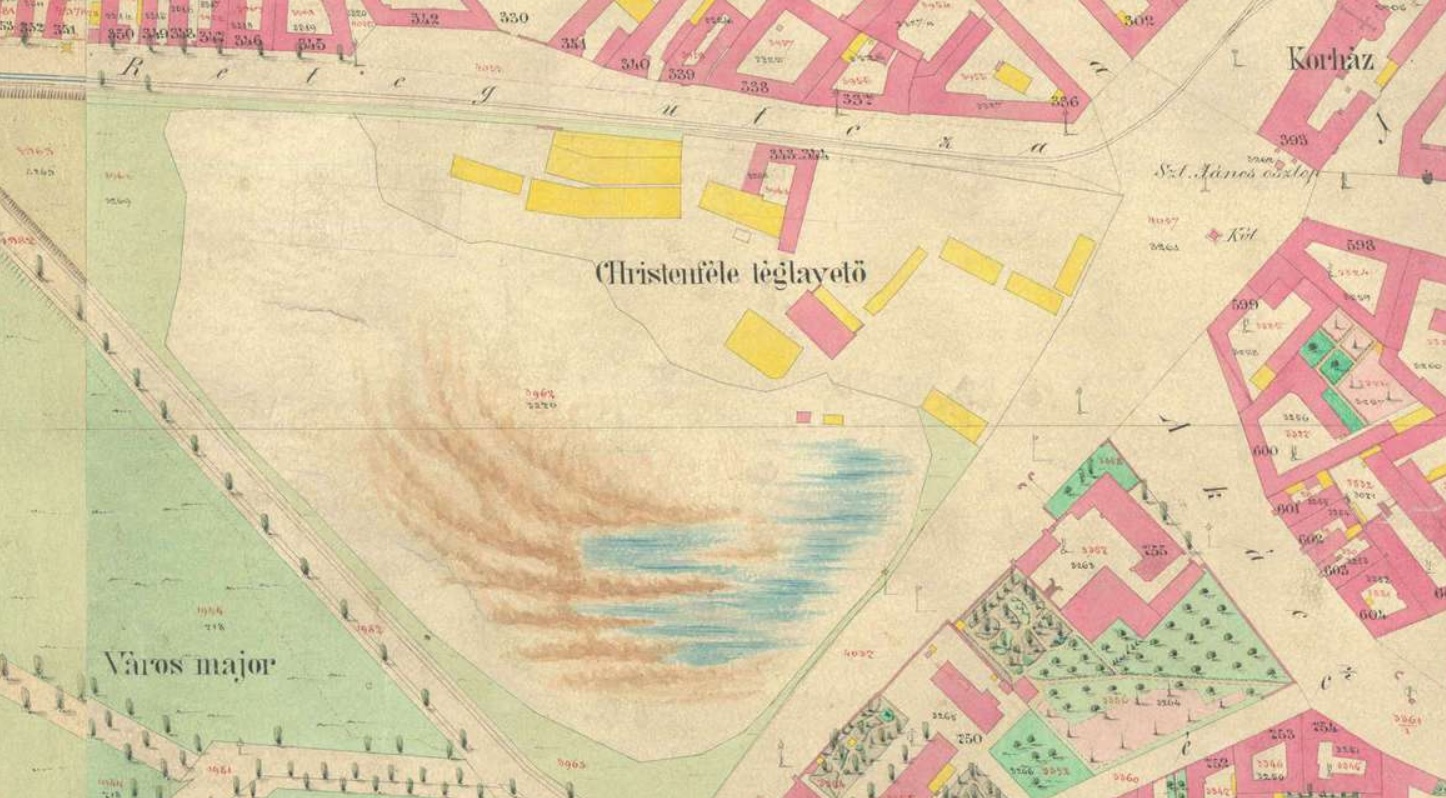
Christen's bricklayer on the site of Széll Kálmán Square and the formed pond on a map from 1873 (Source: Hungaricana / mapire.eu)
Skating is still one of the most popular winter sports, done by many in Buda too. In the "happy times of peace" [boldog békeidők in Hungarian], however, the inhabitants of the capital were able to skate in many places and it enjoyed much greater popularity than in modern times. After the compromise, various associations and clubs began to form almost immediately, so the Buda Torna Egylet [Buda Gymnastics Association] and the Pesti Korcsolyázó Egylet [Pest Skating Association] were established in 1869, the latter continuing its activities as the Budapesti Korcsolyázó Egylet [Budapest Skating Association] in 1873 when the capital was united.
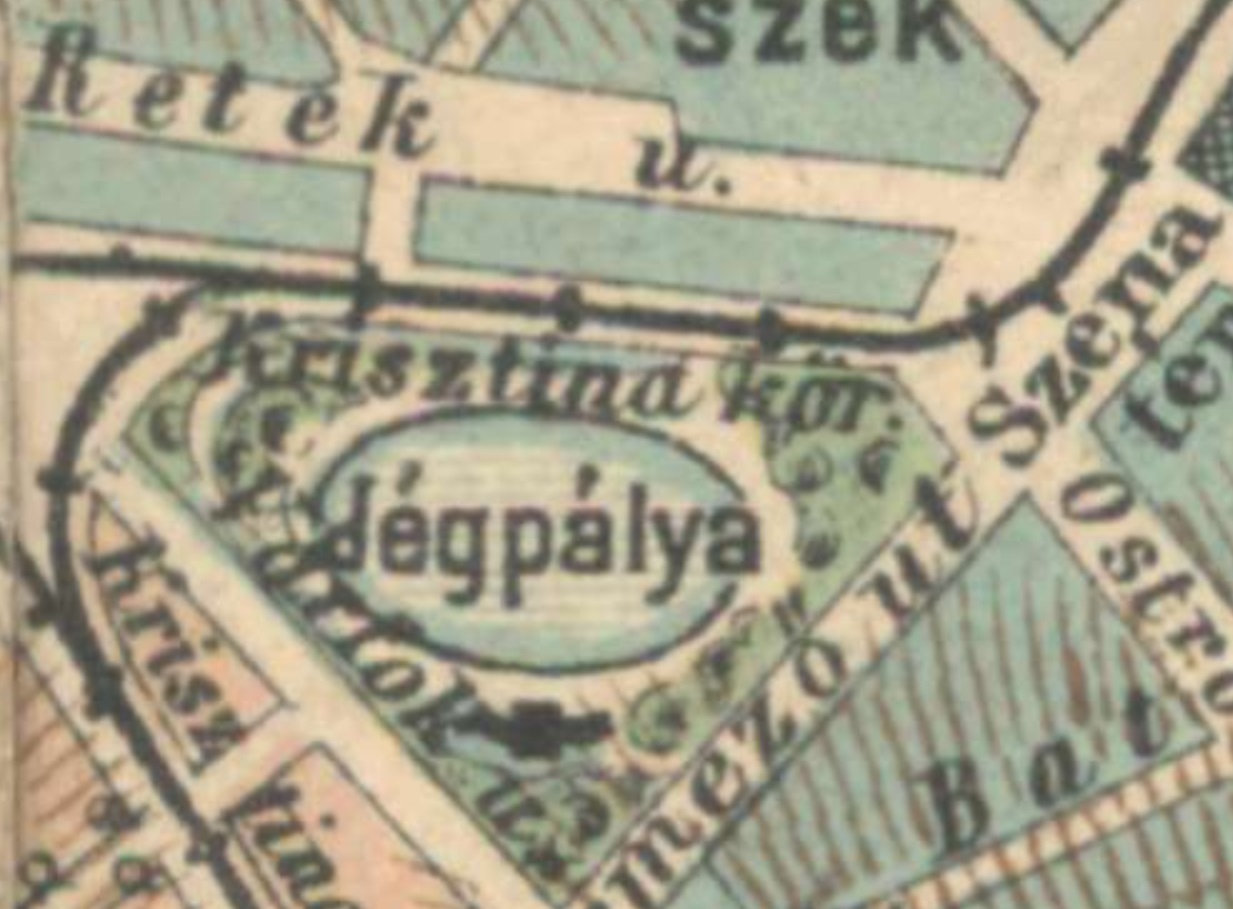
It can be clearly seen on this 1903 map that the area of the former Széll Kálmán Square officially operated as an ice rink (Source: Hungaricana / mapire.eu)
The Buda ice rink, which was on the site of the present Széll Kálmán Square, was officially opened in 1895, a few months after the establishment of the Buda Skating Association, but the newspapers show that shortly after the 1870 opening of the Városliget rink, in 1874 people also skated here on the rink, which was then still only frozen rain and groundwater on a construction site. A few years later, in 1880, people skated at the site of the former brick-burner, organized by the Buda Civil Circle.
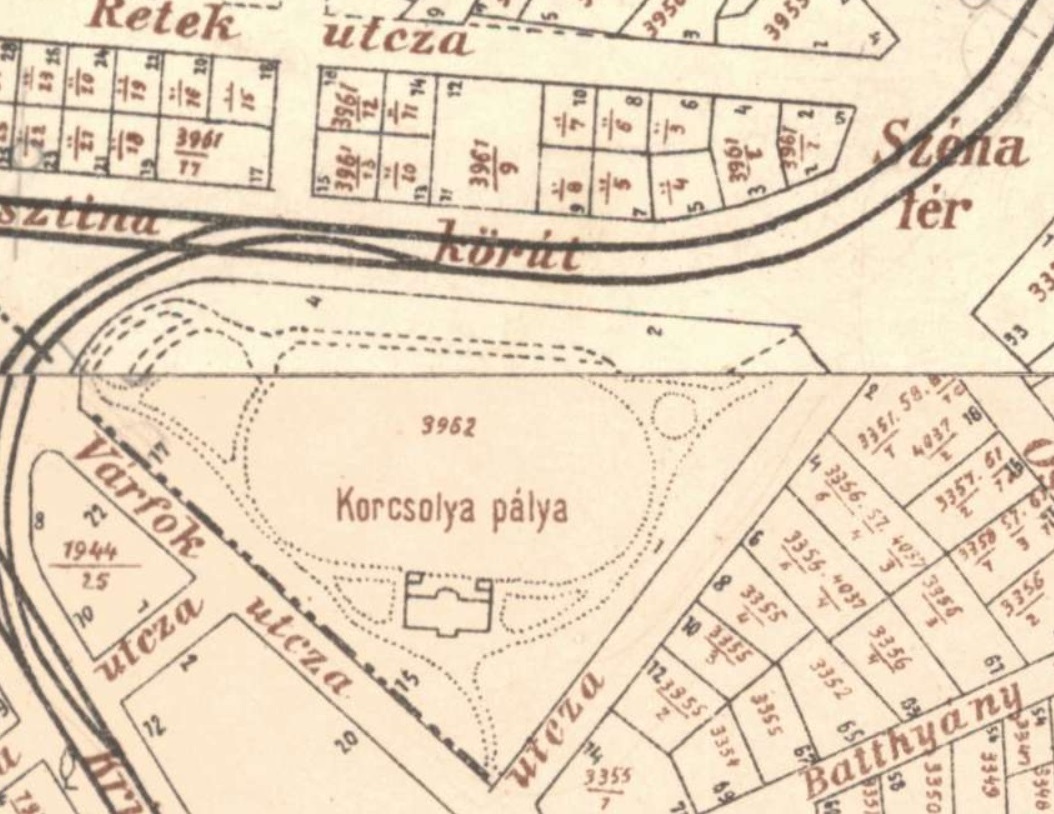
The skating rink in Buda on a map from 1908, where the skating hall can be seen, just like on the map from 1903 (Source: Hungaricana / mapire.eu)
It may be hard to believe, but Budapest was once a citadel of skating. In 1895, the Budapest Skating Association had nearly 7,000 members, while the skating associations in Berlin, Paris, Amsterdam and Vienna, which had the largest number of members abroad, boasted only 3-4,000 members. Of course, the beautiful big ice rink in the Városliget attracted the most from abroad, but around the turn of the century, the development of the Buda ice rink attracted skating lovers at least as much as it did in Pest.
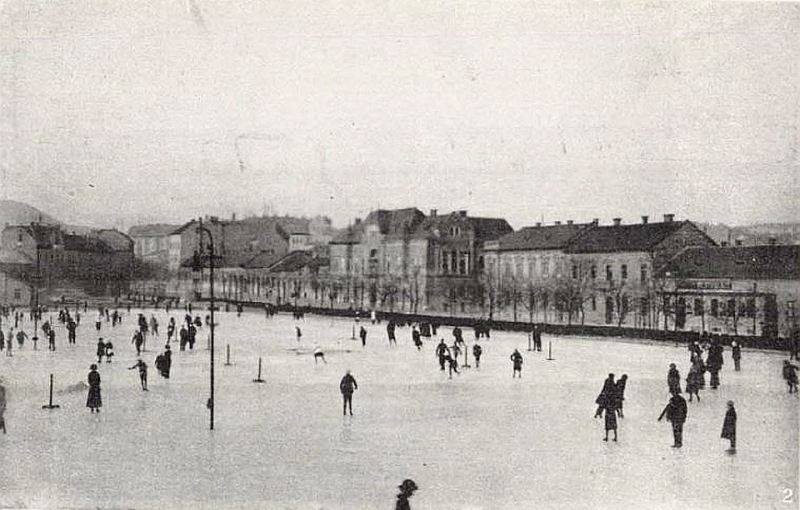
Skaters in the former Széll Kálmán Square in 1914 (Source: Vasárnapi Ujság, 18 January 1914)
The operation of the skating rink in Buda before 1895 is also shown in the 15 January 1893 issue of the Herkules sports magazine, which reports on a skating competition on the ice in Buda. “The weather promised to be mild this morning, but by no means so warm as to make the race impossible and so we looked forward to the afternoon competition with great interest. Barely after 2 o'clock, there were so many people interested in the competition that we were pleased to find that this sport was starting to come to us too. A very nice lady audience appeared in very nice numbers and towards 3 o'clock the homely Buda ice rink was barely able to accommodate the visitors. ”
The General Assembly of the Capital ordered the filling of the large, deep pit in 1895, and this work was carried out that year. The already filled area was given to the Buda Skating Association, which was founded in the autumn of 1895, for 15 years to turn it into a sports field and ice rink. It didn't take long after the first clubhouse of the BBTE (Budapesti (Budai) Torna Egylet [Budapest (Buda) Gymnastics Association]) was set up as the centre of the course in 1897, which had previously served as a restaurant and wooden-framed beer tasting pavilion at the Millennium Exhibition. Fortunately, the 1901 issue of the Vasárnapi Ujság also published a graphic about it, but several other photos show the beautiful hall, which was the work of Ödön and Marcell Neuschloss.
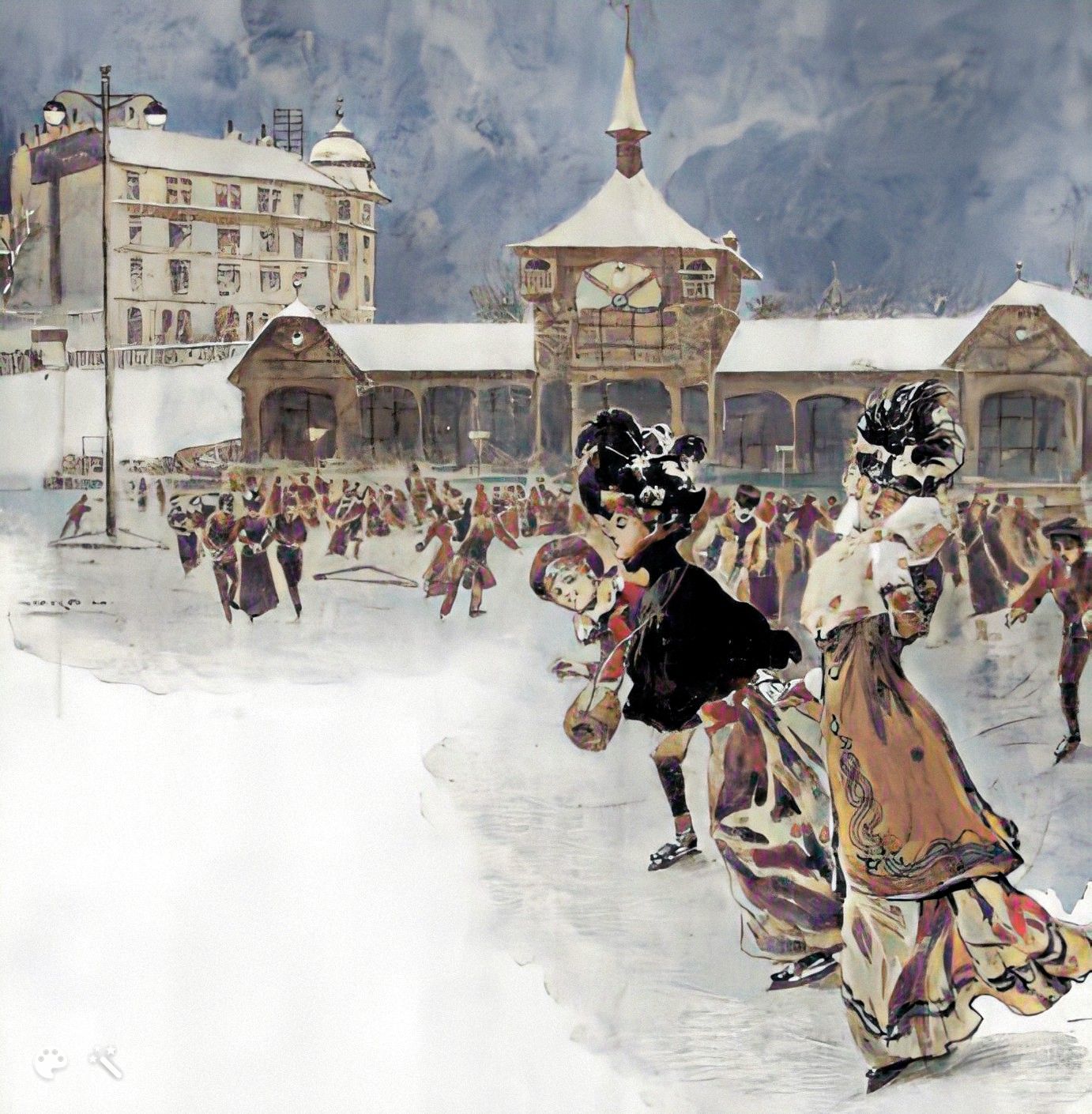
In the background of the new ice rink in Buda, the skating hall serving as the beer tasting pavilion of the former Millennium Exhibition (Source: Vasárnapi Ujság, 10 February 1901) (Digitally post-colored image)
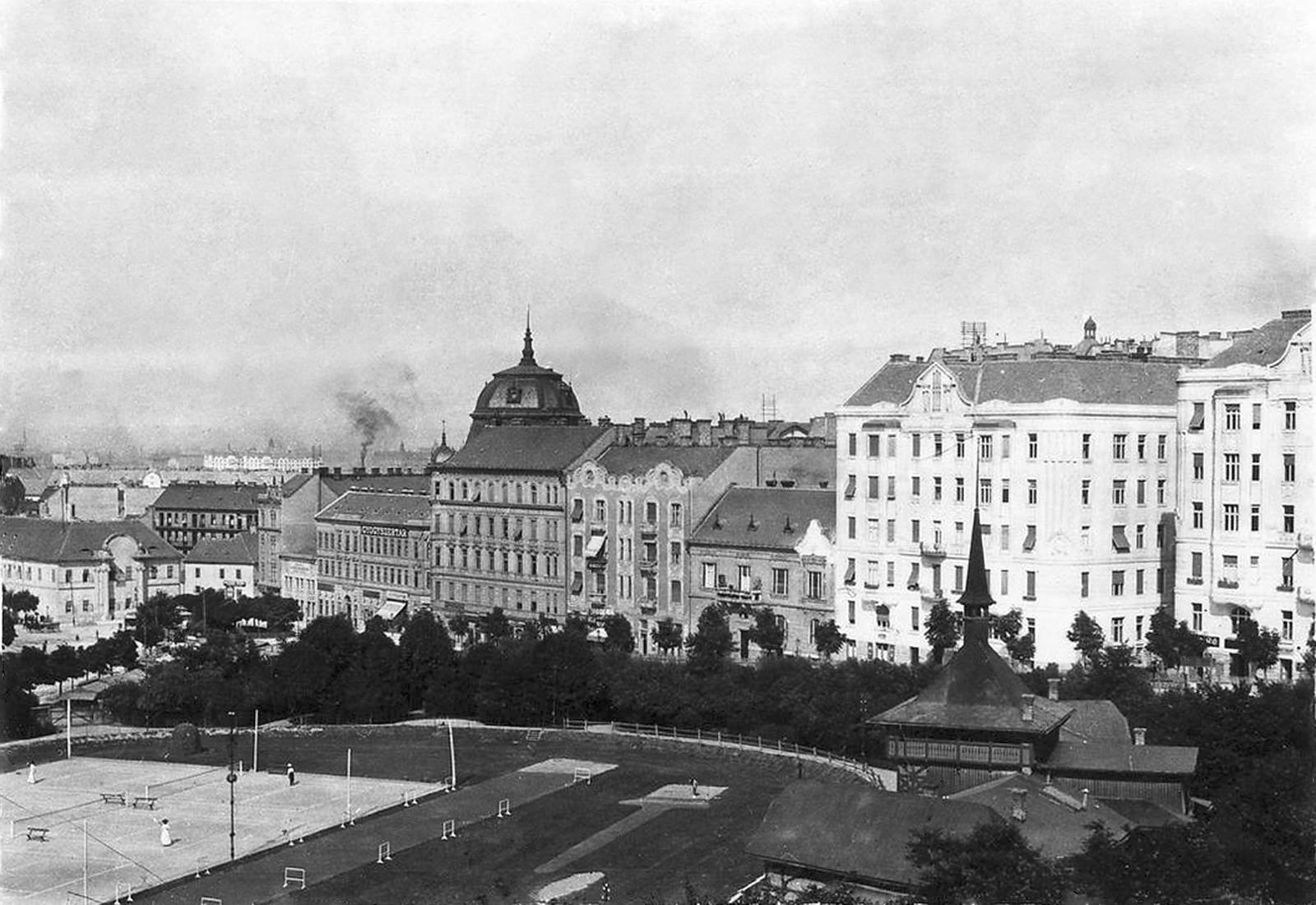
The first skating hall in Széll Kálmán Square can be seen on the right. The space was used for tennis and other sports in the summer (Photo: FSZEK Budapest Collection)
“There is now an ornate and very comfortable hall there, the work of the entrepreneurs Ödön and Marczel Neuschloss, which was the pavilion of the breweries at the millennium exhibition and then moved to its current location after due renovation. In addition to a large warming room and lounge area, it has a cloakroom, medical, board and office rooms: as well as a buffet and separate men's and women's Jackson Haines ice-skate changing rooms. In addition, there is a skating rink and equipment room, a caretaker's apartment, chambers, etc., and an upstairs area and warming rooms for the military band. In addition to the 320-square-foot podium in front of the entire hall, there is also a separate ice-skating terrace. In the large audience Buda skating rink we can often see Prime Minister Kálmán Széll, who accompanies his five-year-old grandson to the ice, and duchess Mrs. Rudolf Lobkovitz is also an everyday guest of the pleasantly located ice track "- reported the 10 February 1901 issue of the Vasárnapi Ujság.
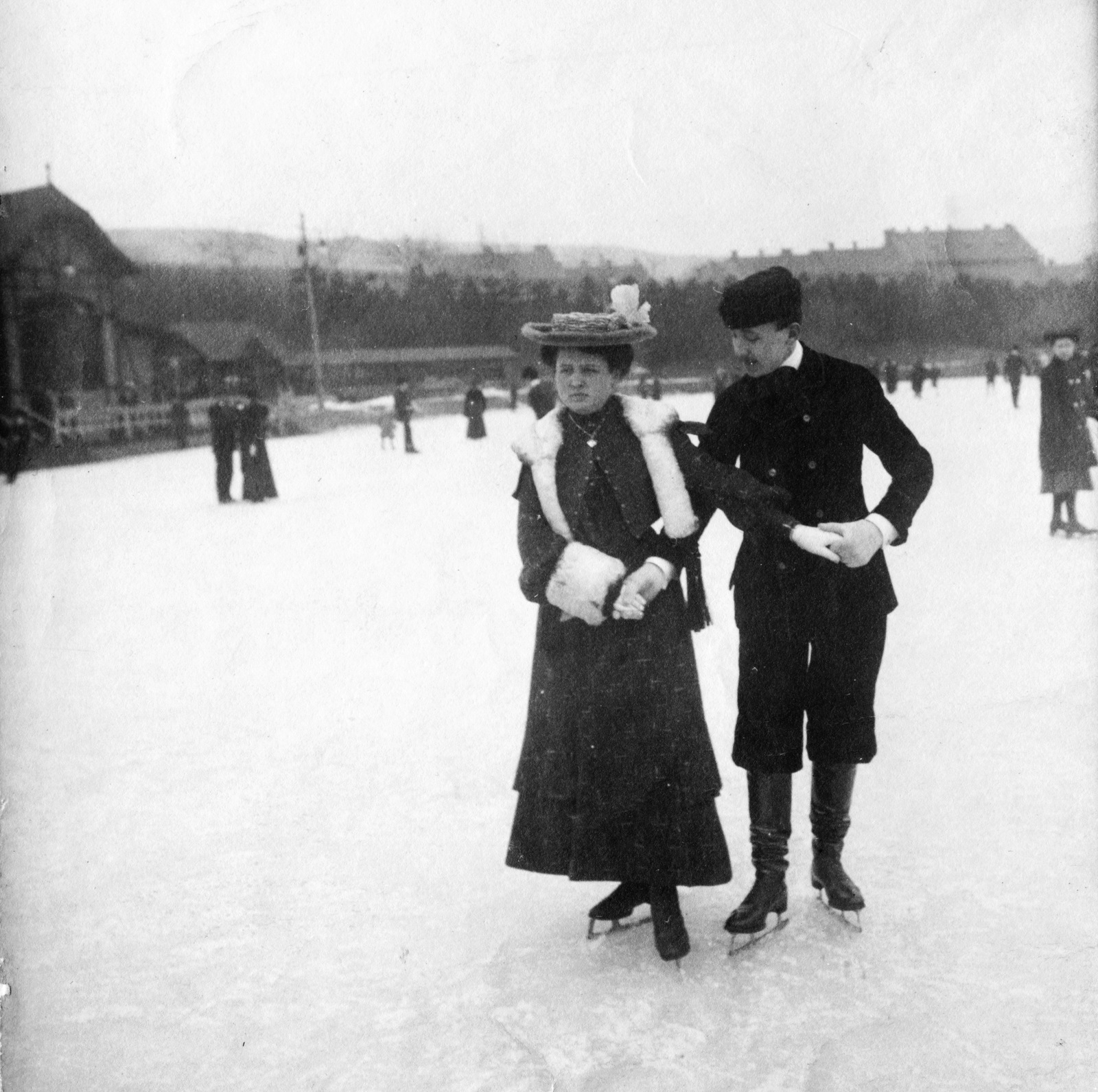
A couple of skaters at the Buda rink in the early 1910s. In the background you can see the edge of the first wooden frame skating pavilion (Photo: Fortepan / No. 53640)
The beautifully constructed rink was soon a competition for the one in Városliget. Its contemporaries praised the ice rink and also pointed out that it was much better than the “rival” of Pest because of the wind-protected area. However, the wooden frame pavilion not only deteriorated over the years, but was no longer able to meet the increased demands.
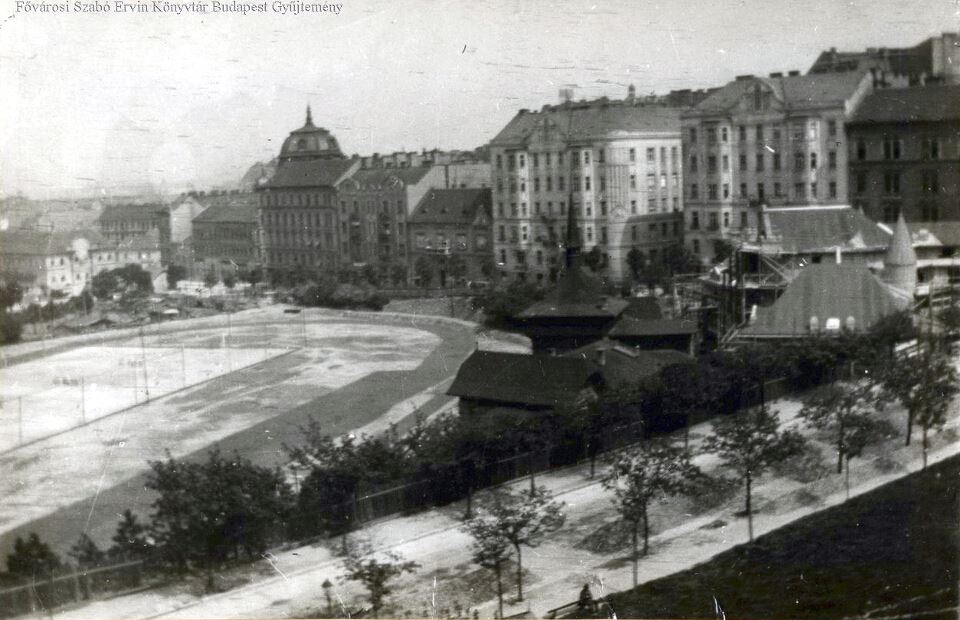
An interesting picture, where the old skating hall and the new hall under construction can be seen together (Photo: FSZEK Budapest Collection)
The association extended its usage contract with the capital in 1911 for another 40 years, and also determined that the rink should be significantly enlarged and a permanent hall should be built there to meet the needs of a modern sports complex. As a result, a tender has been issued for a new skating rink, which will also function as BBTE’s second clubhouse. The tender was won by the plans of Gyula Sándy, who also designed the later Post Palace here, in Széll Kálmán Square.
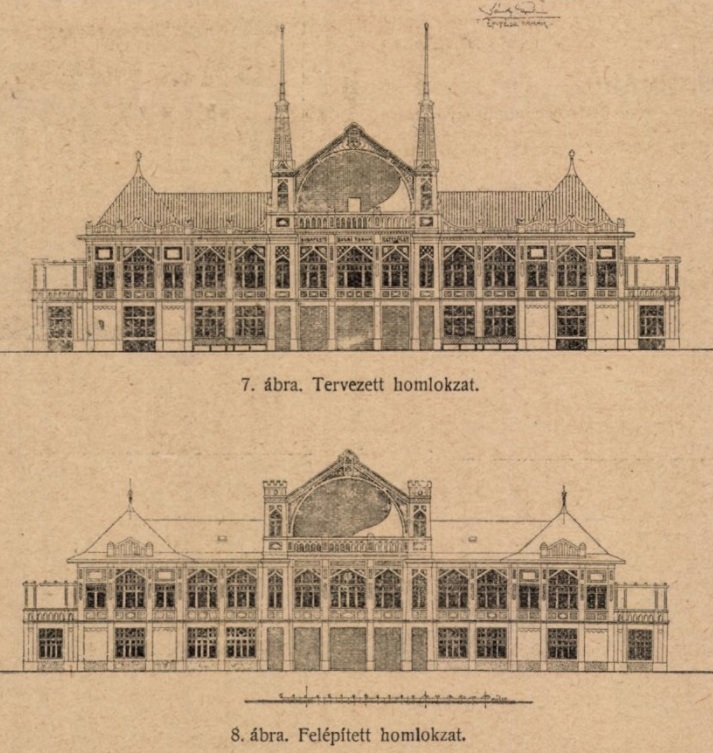
The tender of Gyula Sándy and the implemented plan (Source: Építő Ipar – Építő Művészet, 12 July 1914)
The Építő Ipar – Építő Művészet presented the building in detail in its 5 and 12 July 1914 issues. “At the beginning of winter, the track can be filled in a short time from two 80 mm plumbing pipes, constantly feeding it and thus compensating for the water loss due to extraction and evaporation. However, the aforementioned sewer system is also used for spring drainage. In summer, about 10 tennis courts can be set up in the middle, around which there is still ample space for other sports; so with the proper shaping and equipment of the area, it would be the capital's best such estabilishment in both winter and summer. "
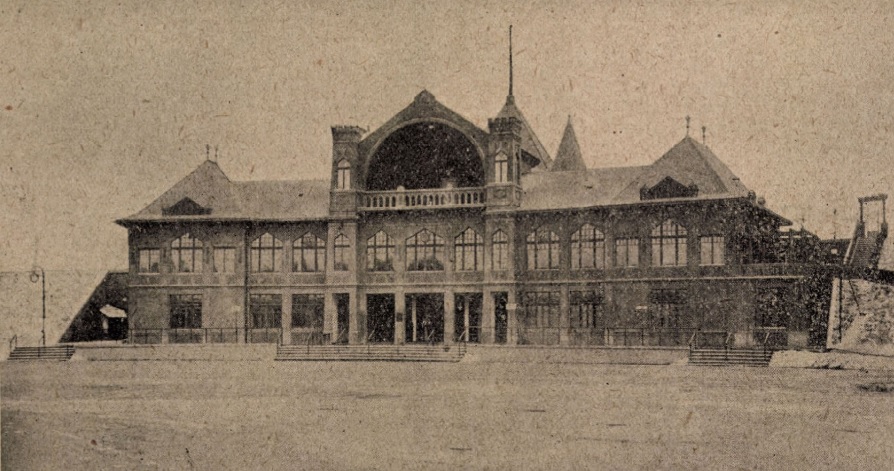
The new skating hall and clubhouse were completed in 1913 (Source: (Source: Építő Ipar – Építő Művészet, 5 July 1914)
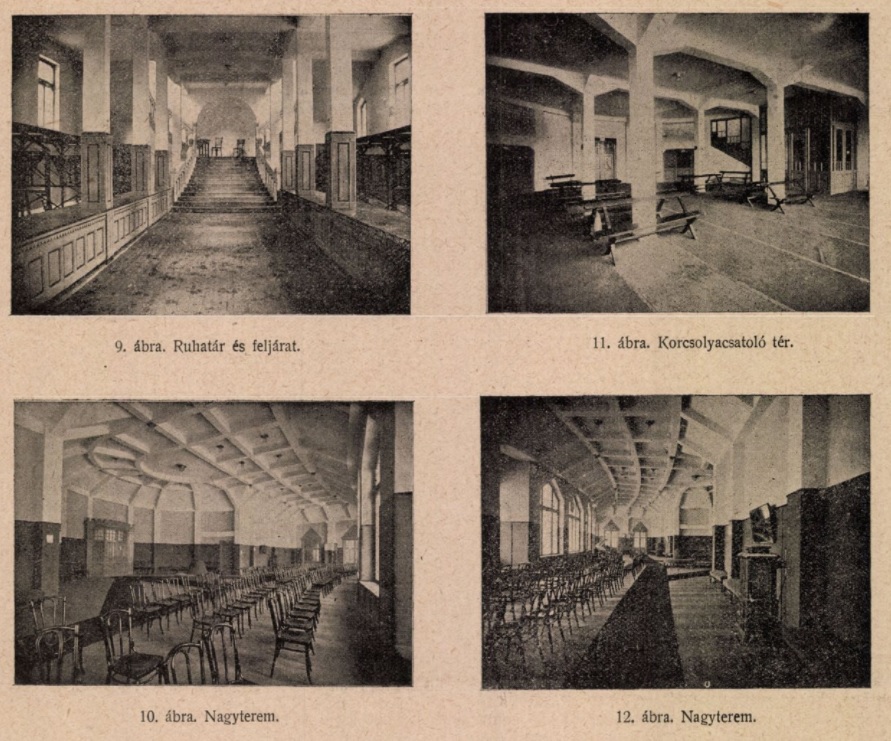
Interior pictures of the new sports hall (Source: Építő Ipar – Építő Művészet, 12 July 1914)
The hall, designed by Gyula Sándy, was completed in 1913, after which the desire for skating increased even more. On 30 October 1925, the Budai Napló wrote about the skating rink: “Perhaps nowhere in the world is there a sports complex that harmoniously fits into the noisy life of the capital, as here in Buda - the pit, commonly known as the Buda Ice Rink. BBTE has established the most ideal race track there with a lot of cost and a lot of work. We can safely say that there is hardly a match in the world. ”
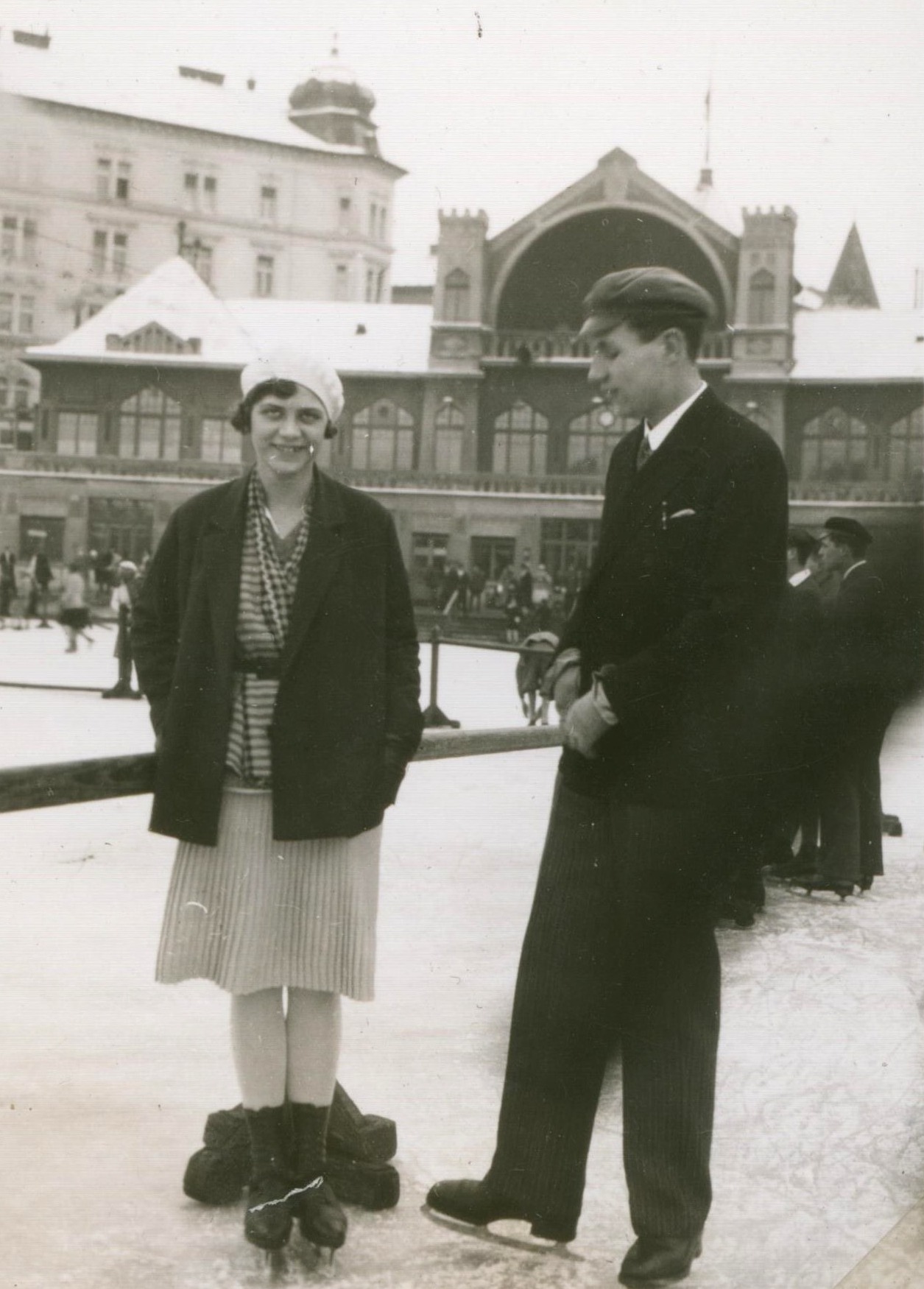
Skating couple in front of the new skating hall designed by Gyula Sándy in the 1930s (Source: Vincent Melonedefer's family album)
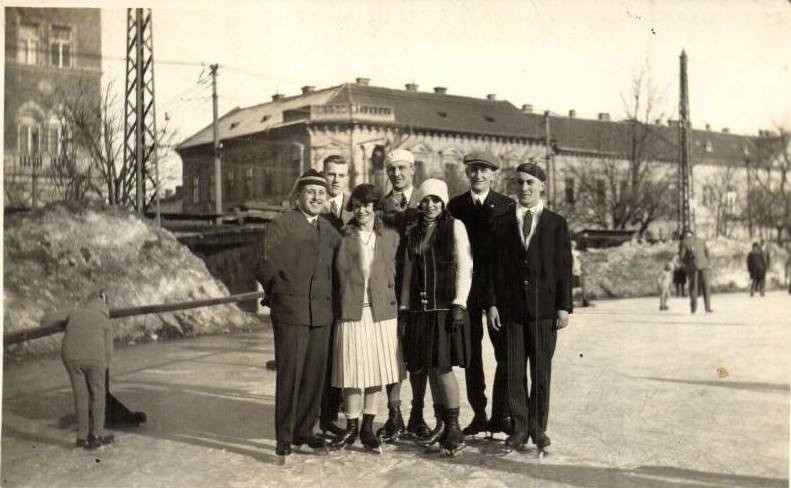
Ice skaters on the Buda ice rink in 1929 (Photo: Hegyvidéki Helytörténeti Gyűjtemény)
The popular sports centre became one of the most beloved centres in Buda in the winter, but there were also popular tennis courts and sports courts in the summer. The square, which was also skated several times by Minister of Finance Kálmán Széll, became Széll Kálmán Square officially in 1929. The Buda ice rink was of great interest throughout its existence.
.jpg)
In the summer, skating was replaced by tennis, the picture was taken in 1924 (Photo: Fortepan / No. 170024)
The end of the sports field and thus the ice rink was when the construction of the tram terminal started in 1938 and the BBTE had to move to Óbuda. The transport hub was completed just 80 years ago this year, by 1941, which showed such a different picture then than it is today that few can imagine that there was once a huge skating life here. However, the citizens of Buda do not have to go far today, because instead of the old rink, they can now use the new Buda Ice Rink in Széna Square, but skating can be enjoyed on many other known ice rinks elsewhere in the city.
Cover photo: The atmosphere of the 1910s in the former Széll Kálmán Square (Source: II. kerület ANNO Facebook Group)

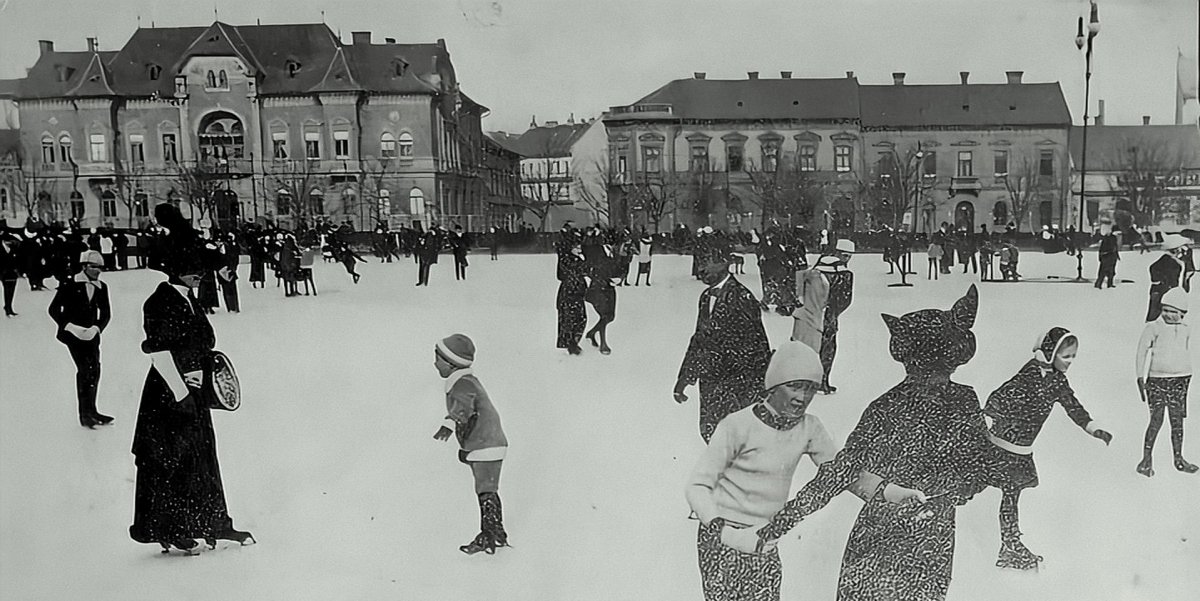


































Hozzászólások
Log in or register to comment!
Login Registration